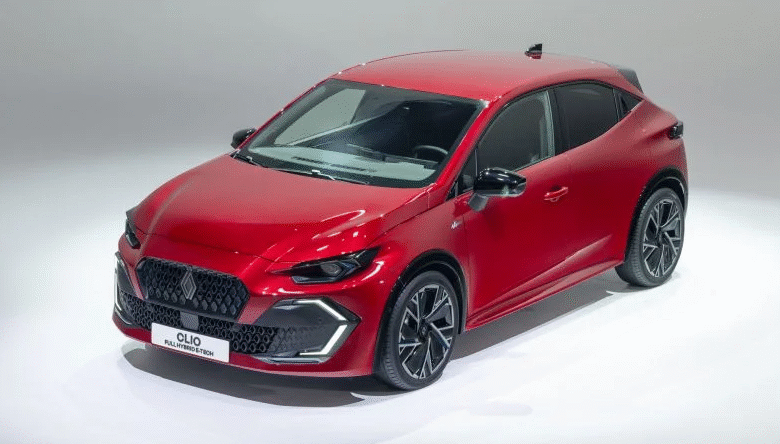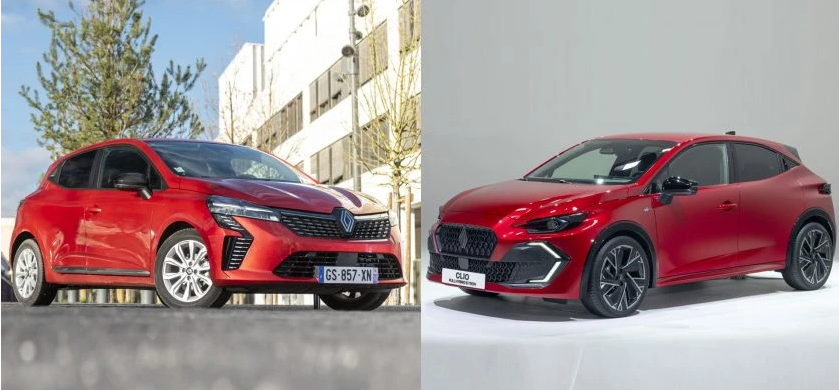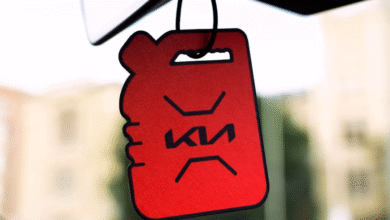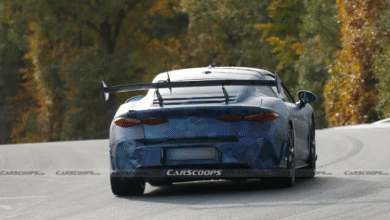Renault Clio 6 Unveiled at Munich : A Radical Evolution Compared to the Clio 5

A Bold Step Forward for Renault’s Best-Selling Hatchback.
The Renault Clio 6 has officially been unveiled at the Munich Mobility Show 2025, and it represents the most dramatic design shift in the Clio’s history. Unlike the smooth evolution between the Clio 4 and Clio 5, this sixth generation embraces a bolder, more aggressive identity. Renault, after modernizing the Clio 5 with its 2023 facelift, is now rewriting the rules of the city car segment with a sharper, more distinctive design language and a complete overhaul under the hood.
Style : A Fusion of Innovation and Familiar Inspirations
The front end of the new Clio 6 features sharper lines, a shark-nose grille with inverted inclination, and elongated bonnet creases reminiscent of the Nissan Micra K14 and even Mitsubishi’s Jet Fighter grille. The floating grille, detached from the slim headlamps with no protective covers, gives the hatchback a futuristic, high-tech look. This theme is echoed at the rear with embedded taillights and a prominent Renault badge centered between them.

Renault designers have also drawn inspiration from the Renault Emblème Concept, revealed at the Paris Motor Show 2024, particularly the diamond-shaped daytime running lights. Side profiles are smoother yet muscular, reminding many of its French rival, the Peugeot 208, while ensuring a lower visual stance and bigger wheel arches for a more athletic look.
Compared to the Clio 5, the differences are striking. The older model’s traditional headlamp-globe setup feels conservative, whereas the Clio 6 embraces modern, edgy styling.
Bigger, Wider, Yet Practical
The Clio 6 has grown by 7 cm in length (4.12 m) and 4 cm in width (1.77 m), giving it more presence on the road. However, rear passenger space remains almost unchanged, with an 8 mm increase in wheelbase. Boot space remains steady at 391 liters for petrol models, though the E-Tech Hybrid version gains an additional 8 liters for a total of 309 liters.
Practical upgrades include a lower loading height (-4 cm) and a larger LPG tank capacity (50 liters vs. 39 liters previously), improving range significantly.
Interior : Retro Inspirations Meet Modern Technology
Inside, the Clio 6 blends retro charm with modern digital interfaces. The new horizontal dashboard layout echoes the upcoming Renault 5 and 4L EVs, while the steering wheel design borrows from the Renault Rafale SUV. Entry-level trims get a 7-inch digital display, while higher trims boast a 10-inch cluster alongside a 10-inch central touchscreen across the entire range.
Despite its tech-forward upgrades, Renault has wisely kept some physical buttons for intuitive use. This refined interior positions the Clio 6 as a strong competitor against the upcoming Peugeot 208 (2027), which promises futuristic features like a hypersquare steering wheel.
Engines : More Power, Goodbye Diesel
The Clio 6 says farewell to diesel. Instead, it introduces new, more powerful engines:
- 1.2L 3-cylinder turbo petrol – 115 hp (manual or automatic)
- 1.2L 3-cylinder bi-fuel petrol/LPG – 120 hp (automatic only)
- 1.8L 4-cylinder E-Tech Hybrid – 160 hp with a 1.4 kWh battery
Compared to the Clio 5’s 1.0L engines (90 hp petrol, 100 hp LPG, and 145 hp hybrid), this is a significant performance boost. Unfortunately, the entry-level SCe 65 and Blue dCi diesel are gone, meaning prices will likely rise above the €20,000 mark.
Trim Levels and Market Position
The Clio 6 will be available in Evolution, Techno, and Esprit Alpine trims. Renault has yet to announce pricing, but considering inflation and added features, affordability will be key. Still, the Clio remains one of Europe’s most iconic hatchbacks, and this radical redesign positions it as a serious contender against rivals like the Peugeot 208, Volkswagen Polo, and Ford Fiesta successors.




